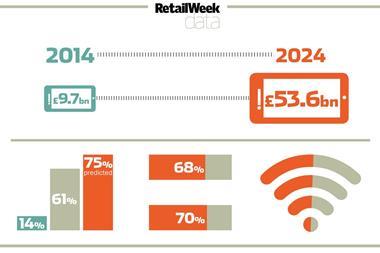Google’s algorithm update favours mobile-friendly sites by pushing them up search rankings, so what should retailers do to keep hold of traffic?
The latest changes in Google’s search algorithm highlights the growing number of mobile users online and how businesses should reflect this in their online user experience.
Dubbed across the developer world as ‘mobilegeddon’, this latest update from Google is likely to greatly impact any businesses who are not yet thinking mobile-first.
The technology giant said in a blog post: “We’ve all been there: you’re on your phone and click through to a website, only to find it’s hard to read or burdensome to navigate because it isn’t formatted for a mobile screen.
“With mobile phones increasingly becoming the primary way for people to search the Internet, we want to ensure that when you search on Google you find content that is not just relevant and timely, but also easy to read and interact with on smaller mobile screens.”
And as of April 21 2015, how ‘mobile-friendly’ a website is, is now being considered by Google when it ranks sites on its search pages, favouring those with features such as responsive design and quick page-load times.
Maria Mitsostergiou, head of search at the connected solutions company Somo said this change will separate the mobile-first companies from those who have not yet seen the benefit and power of mobile.
The “good news”
Google said the “good news” is that mobile proofing a website does not need to be expensive or time-consuming.
“It could be as simple as adjusting website settings or picking out a design you like. Even if you opt to fully redesign your site, a small business website with 10-20 pages could be completed in a day or so,” said the tech giant.
This suggests large retailers with hundreds, if not thousands of product pages on their websites, may have a larger task on their hands.
But retailers who make the effort to create mobile websites should reap the rewards from customers who are more likely to search from mobile devices.
Shop Direct’s Very.co.uk said mobile accounts for 52% of its online sales, while Argos claims to see 50% of its business begin online, with a lot of this growth coming from mobile devices.
“Upping the stakes”
Charles Nicholls, SVP of product strategy, hybris and SAP customer engagement and commerce said: “Prior to this [Google] development, a poor mobile experience might have a negative impact on conversion rates or customer loyalty – following it, consumers may struggle to find sites at all.”
But Nicholls argued that Google’s heavy-handed approach has perhaps been necessary to convince retailers who haven’t yet adopted a mobile-first policy.
“Mobile is not just another channel. From a customer experience perspective, it can be used to ensure seamless customer journeys and cross-channel consistency of experience,” he added.
“Marketers must focus on where their customers are spending time, and that means having a compelling mobile experience is not optional. Google has just upped the stakes for any marketers still doubting the importance of the small screen,” he said.
Any retailers who have not yet implemented a mobile-first strategy should do so quickly, to avoid collecting cobwebs at the bottom of search rankings.
How do you know if Google deems your website ‘mobile-friendly’ or not?
Retailers can use Google’s Mobile Friendly Testor to test individual webpages, or the entire website using its Mobile Usability report in Webmaster Tools.
“Once a site becomes mobile-friendly, we will automatically re-process those pages (and webmasters can expedite the process by using Fetch as Google with Submit to Index),” said Google.
The algorithm change affects mobile websites, and tablet websites are at the moment unaffected, but are likely to be incorporated in the future. Google also said non-mobile-friendly sites won’t disappear from mobile search results altogether, and they may even rank highly if they contain great content.


























No comments yet